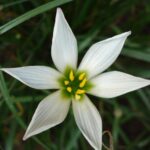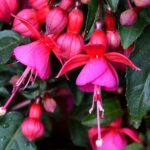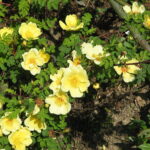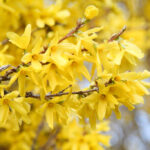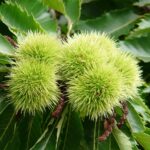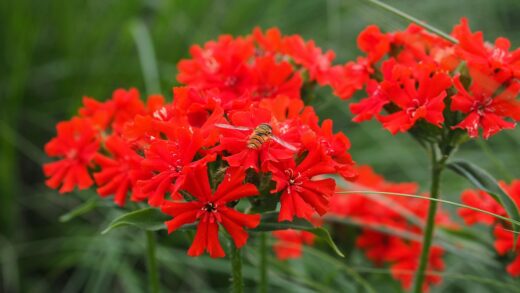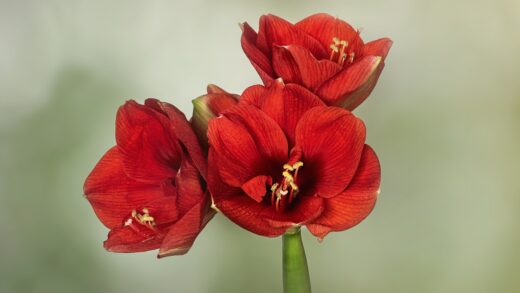Watering and fertilizing of angel’s trumpet
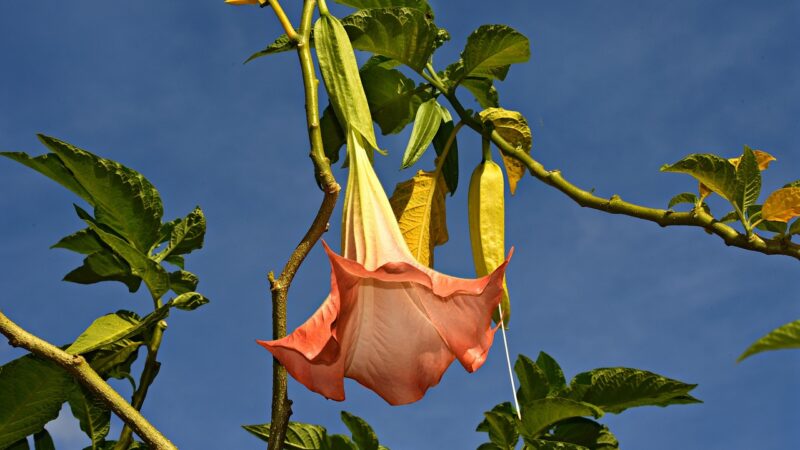
Providing the correct balance of water and nutrients is arguably the most critical aspect of successfully cultivating a thriving Brugmansia. These plants are legendary for their voracious appetite and immense thirst, a direct result of their incredibly rapid growth rate and the production of enormous, lush leaves and a profusion of large, heavy flowers. Failure to meet these substantial demands will quickly result in a stunted, lackluster plant with yellowing leaves and a disappointing lack of blooms. Mastering the art of watering and fertilizing is an ongoing dialogue with the plant, requiring regular observation and adjustments based on the season, weather conditions, and the plant’s specific stage of growth. It is this consistent and generous provision of resources that fuels the spectacular display for which angel’s trumpets are so beloved.
The water requirements of a Brugmansia, particularly a container-grown specimen during the peak of summer, can be astonishing. The large surface area of their leaves leads to a high rate of transpiration, meaning they lose a significant amount of water to the atmosphere on warm, sunny days. This necessitates deep, thorough watering on a frequent basis, often daily, to replenish this moisture and keep the plant turgid and healthy. The primary rule is to maintain consistent soil moisture, allowing the top few centimeters of soil to dry out slightly between waterings but never letting the entire root ball dry completely. This consistent supply of water is vital not only for hydration but also for transporting essential nutrients from the soil to all parts of the plant.
Just as important as water is a consistent and robust fertilization regimen. Angel’s trumpets are exceptionally heavy feeders, and the nutrients present in their initial potting soil are quickly consumed. To sustain their vigorous growth and support prolific flowering, they require regular applications of fertilizer throughout the entire growing season, from spring until autumn. A balanced, water-soluble fertilizer is often the preferred choice, as it provides nutrients in a readily available form that can be absorbed quickly by the plant’s roots. This “feeding” is not an occasional treat but a fundamental and recurring part of the care routine, essential for the plant to perform at its peak.
The synergy between watering and fertilizing is crucial. Nutrients can only be taken up by the roots when they are dissolved in water, so proper hydration is a prerequisite for effective fertilization. Many growers adopt a “weakly, weekly” approach, applying a diluted liquid fertilizer with every watering or at least once a week during the height of the growing season. This method provides a steady, constant stream of nutrition that mimics a nutrient-rich natural environment, preventing the boom-and-bust cycle that can occur with infrequent, strong applications of fertilizer. Understanding and implementing a disciplined watering and fertilizing schedule is the key to unlocking the full, breathtaking potential of the angel’s trumpet.
Understanding the plant’s water needs
Brugmansia’s need for water is directly linked to its anatomy and tropical origins. The plant’s large, broad leaves are highly efficient at photosynthesis but also lose a great deal of water through transpiration, especially on hot, windy, or sunny days. This makes them exceptionally thirsty plants, and their water requirements far exceed those of many other common garden ornamentals. A key indicator of thirst is wilting, where the leaves and even young stems begin to droop. While a slight wilt in the heat of the afternoon from which the plant recovers in the evening is common, a persistent wilt is a clear sign of significant water stress that must be addressed immediately to prevent damage to the plant’s tissues.
More articles on this topic
The goal of watering is to keep the root zone consistently moist but not saturated. It is a common mistake to provide shallow, frequent waterings, which only wet the top layer of soil and encourage a shallow root system. Instead, the proper technique is to water deeply and thoroughly, ensuring that the entire root ball becomes hydrated. For container-grown plants, this means watering until water begins to flow freely from the drainage holes at the bottom of the pot. This not only ensures complete hydration but also helps to flush out any accumulated mineral salts from the soil, which can build up over time from fertilizers and tap water.
The frequency of watering is not fixed and must be adapted to a variety of factors. The most significant of these are the weather and the size of the container relative to the plant. During a cool, overcast week in spring, a plant may only need watering every few days. However, during a hot, sunny spell in mid-summer, the same plant, now much larger, may require a thorough soaking every single day, and sometimes even twice a day. Gardeners must learn to assess the plant’s needs by checking the soil moisture, either by touch or by lifting the pot to gauge its weight. A light pot is a clear indication that it is time to water.
It is also important to recognize that the plant’s water needs change dramatically with the seasons. As autumn approaches and temperatures cool, the plant’s growth rate slows down, and its water requirements decrease accordingly. Watering frequency should be gradually reduced to prevent the soil from becoming cold and waterlogged, which can promote root rot. During winter dormancy, when the plant may have lost most of its leaves, water needs are minimal. The soil should be allowed to dry out almost completely between infrequent, light waterings, just enough to keep the roots from desiccating entirely.
Creating a consistent watering schedule
Developing a consistent watering schedule for Brugmansia is less about adhering to a strict calendar and more about creating a routine of regular observation and response. The most reliable method for determining when to water is to check the soil moisture directly. This can be done by inserting a finger into the soil to a depth of about five centimeters; if the soil feels dry at that depth, it is time to water. Over time, a gardener will develop an intuitive sense of the plant’s needs based on the appearance of the foliage, the ambient weather, and the weight of the container. Establishing a daily check-in, perhaps every morning, is a good habit to form during the peak growing season.
More articles on this topic
For container-grown angel’s trumpets, consistency is paramount. The limited volume of soil in a pot can dry out very quickly, especially with porous materials like terracotta. During the height of summer, daily watering is often the standard. It is most beneficial to water early in the morning, which allows the plant to hydrate fully before the heat of the day sets in. This timing also ensures that the foliage has time to dry before nightfall, which can help to reduce the risk of fungal diseases. Evening watering is a secondary option, but consistently wet foliage overnight should be avoided.
When watering, the technique is as important as the frequency. It is essential to apply the water slowly and directly to the soil at the base of the plant, avoiding splashing the leaves as much as possible. Using a watering can with a rose attachment or a hose with a gentle spray setting allows the water to soak in gradually rather than running off the surface. The application should continue until the entire root zone is saturated. For very dry, compacted soil that has pulled away from the sides of the pot, it may be necessary to water, wait ten minutes for the soil to begin rehydrating, and then water again to ensure thorough absorption.
To aid in maintaining consistent moisture levels and reduce the watering burden, several strategies can be employed. Using large containers provides a greater volume of soil, which will dry out more slowly than a small pot. Applying a layer of organic mulch on top of the soil can significantly reduce evaporation, keeping the root zone cooler and more moist. For gardeners with many plants or those who travel, setting up a drip irrigation system on a timer can provide a reliable and efficient way to deliver water directly to the roots. These tools help create the stable, moist environment in which Brugmansia thrives.
The nutritional demands of Brugmansia
Angel’s trumpets are famously characterized as ‘heavy feeders’, a term that accurately describes their immense appetite for nutrients. This demand is fueled by their astonishingly rapid growth cycle, during which they produce a massive amount of biomass in the form of thick stems, large leaves, and a constant succession of heavy, intricate flowers. The basic nutrients contained in a standard potting mix are typically exhausted within just a few weeks of active growth. Without continuous supplementation, the plant’s growth will slow, its leaves will turn pale yellow (a sign of nitrogen deficiency), and it will fail to produce the abundant blooms for which it is known.
The primary nutrients required by plants are nitrogen (N), phosphorus (P), and potassium (K), and Brugmansia requires these in significant quantities. Nitrogen is crucial for lush, green foliage and overall vegetative growth. Phosphorus plays a key role in root development, energy transfer, and the process of flower formation. Potassium is essential for overall plant vigor, disease resistance, and the regulation of water uptake. A well-fed Brugmansia will exhibit deep green leaves, sturdy stems, and a robust constitution capable of supporting a heavy flower load.
In addition to the main macronutrients, Brugmansia also requires a range of micronutrients, albeit in smaller quantities. These include elements like magnesium, calcium, sulfur, iron, and manganese. A deficiency in any of these can lead to specific health problems. For instance, a lack of magnesium often presents as yellowing between the leaf veins on older leaves, a condition known as interveinal chlorosis. For this reason, it is beneficial to use a high-quality, complete fertilizer that provides not only N-P-K but also a full spectrum of essential micronutrients to ensure all the plant’s biochemical needs are met.
The demand for specific nutrients can change slightly depending on the plant’s stage of growth. During the initial phase of rapid vegetative growth in the spring, a fertilizer with a higher ratio of nitrogen can be beneficial to encourage the development of a strong framework of leaves and stems. As the plant matures and begins its flowering season, many growers switch to a ‘bloom booster’ formula with a higher proportion of phosphorus and potassium to specifically support the energy-intensive processes of bud set and flower development. This tailored approach to nutrition can help maximize the plant’s performance throughout the season.
Choosing and applying fertilizers
The most common and effective way to meet the high nutritional demands of Brugmansia is through the regular use of a water-soluble fertilizer. These fertilizers are mixed with water and applied during the regular watering routine, providing nutrients in a form that is immediately available for root uptake. This method allows for a high degree of control over the amount and frequency of feeding. A balanced formula, such as a 20-20-20 or 24-8-16, is an excellent choice for general maintenance throughout the growing season. The key to using liquid fertilizers is consistency, with most growers opting for applications at least once a week, and often at a half or quarter-strength with every watering during peak growth.
Alternatively, slow-release granular fertilizers can be incorporated into the potting mix or sprinkled on the soil surface at the beginning of the growing season. These products consist of nutrient-filled pellets with a special coating that breaks down gradually over time, releasing a steady supply of nutrients over a period of several months. While convenient, they may not always provide the heavy, consistent feed that a mature Brugmansia requires during the height of summer. Therefore, many experienced growers use a slow-release formula as a baseline and supplement it with regular applications of a liquid fertilizer to provide an extra boost.
Organic fertilizers offer another excellent option for feeding Brugmansia. Materials like fish emulsion, kelp meal, compost tea, and well-rotted manure provide a rich and complex source of nutrients and can also improve the overall health and structure of the soil. While they may have a lower N-P-K analysis than synthetic fertilizers, they provide a wide range of micronutrients and beneficial microbes. Applying a top dressing of rich compost or aged manure to the soil surface every month or so is a fantastic way to supplement the main feeding regimen and build a healthy soil ecosystem for both container and in-ground plants.
A specific micronutrient that Brugmansia often benefits from is magnesium, which is a central component of the chlorophyll molecule. A deficiency can be common in heavily fertilized container plants. This can be easily remedied by supplementing with Epsom salts (magnesium sulfate). A typical application is one tablespoon of Epsom salts dissolved in one gallon (approximately 3.8 liters) of water, applied to the soil once a month during the growing season. This simple addition can help maintain that deep, rich green leaf color and support overall plant health.
Adjusting routines for seasonal changes
The watering and fertilizing routine for a Brugmansia must be dynamic, adapting in response to the changing seasons and the plant’s corresponding growth rate. In early spring, as the plant emerges from dormancy and begins to produce its first new leaves, its water and nutrient needs are relatively modest. Watering should be done only when the soil begins to dry, and a half-strength dose of a balanced fertilizer can be introduced every other week. As the days lengthen and temperatures rise, both the frequency and concentration of watering and feeding should be gradually increased to match the plant’s accelerating growth.
The peak demand for water and nutrients occurs during the hottest months of summer. This is when the plant is in full, active growth, producing a constant flush of new leaves and flowers. During this period, a “weakly, weekly” feeding schedule is often insufficient. Many successful growers move to a regimen of constant feeding, applying a quarter-strength solution of a balanced or bloom-boosting liquid fertilizer with every single watering. Daily watering is the norm for most container plants. This intense routine provides the constant stream of resources necessary to sustain peak performance and achieve the most spectacular floral displays.
As late summer transitions into autumn, the plant’s growth will naturally begin to slow down in response to shorter days and cooler temperatures. This is the signal to begin tapering off the feeding and watering schedule. The frequency of fertilization should be reduced, perhaps to once every two weeks, and it is wise to switch back to a balanced formula rather than a high-phosphorus bloom booster. Watering should also become less frequent, allowing the soil to dry more thoroughly between applications. This process helps the plant to harden off its new growth in preparation for the coming winter.
By the time the first frost is approaching and the plant is being prepared for its dormant period, fertilization should cease completely. Continuing to feed the plant would encourage tender new growth that would be highly susceptible to cold damage and would not have time to mature. Water should be provided only sparingly throughout the winter dormancy, just enough to prevent the root system from completely drying out. For a dormant plant stored in a cool, dark location, this might mean a light watering only once a month. This dramatic reduction in care is essential for a successful dormant period, allowing the plant to rest and store energy for the coming spring.








